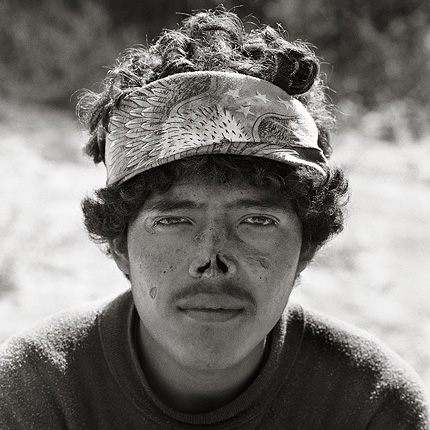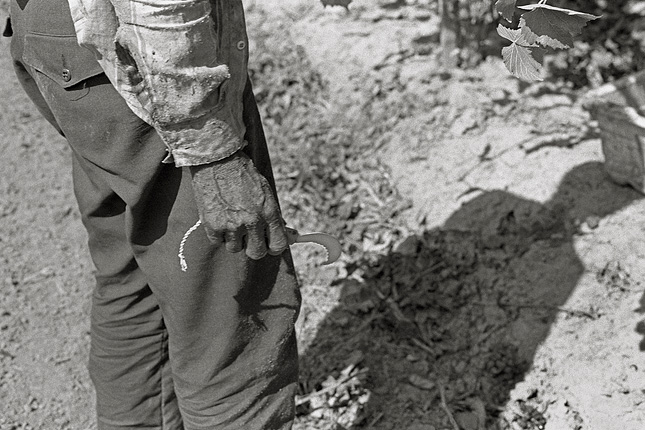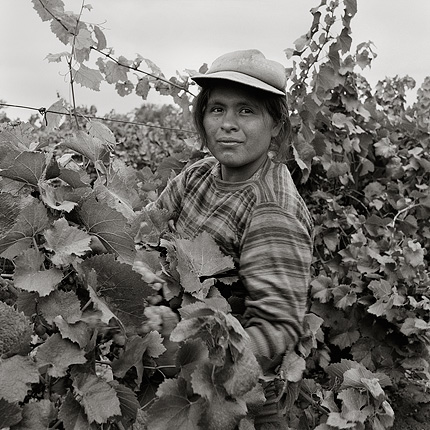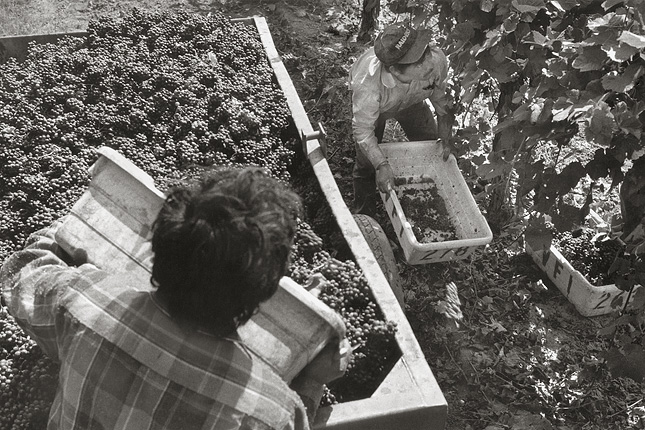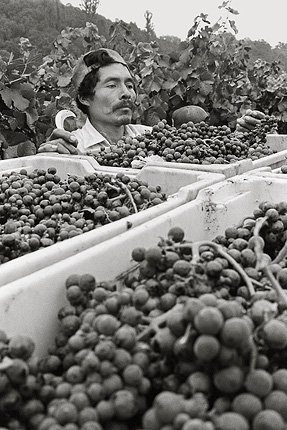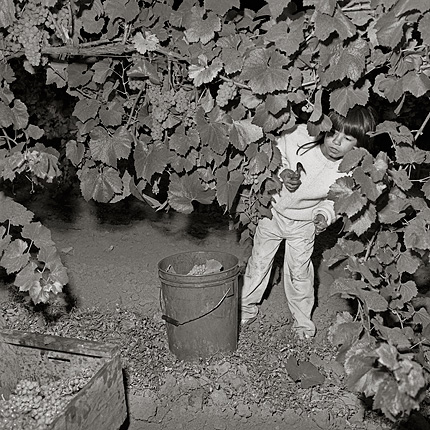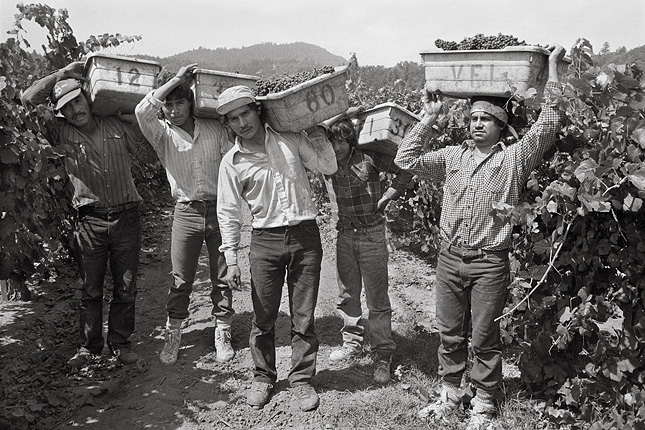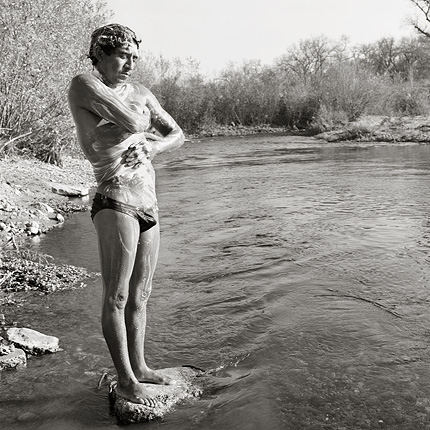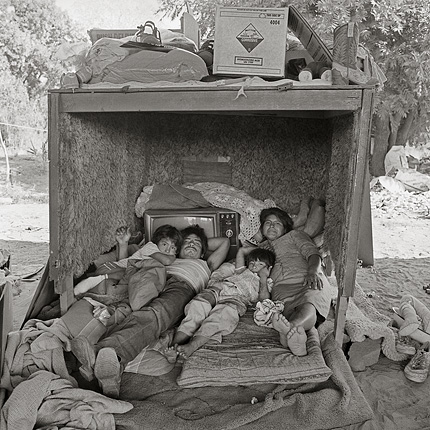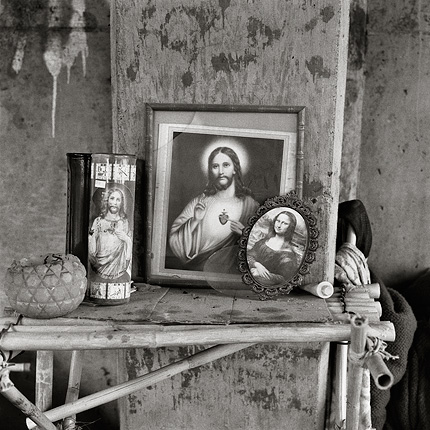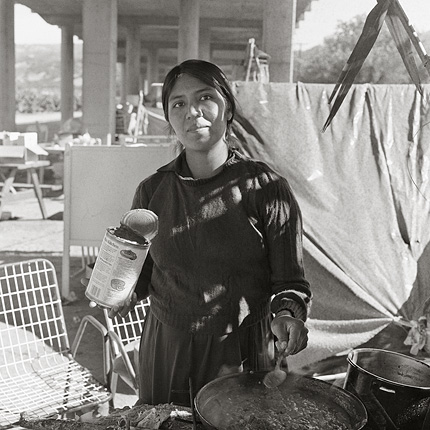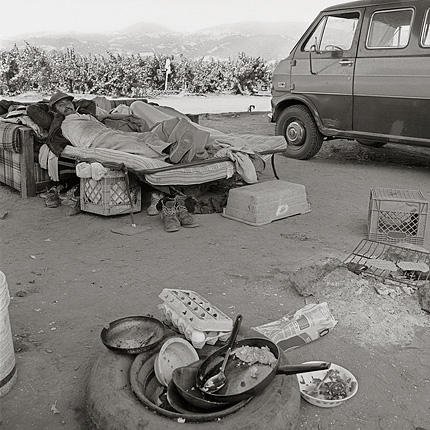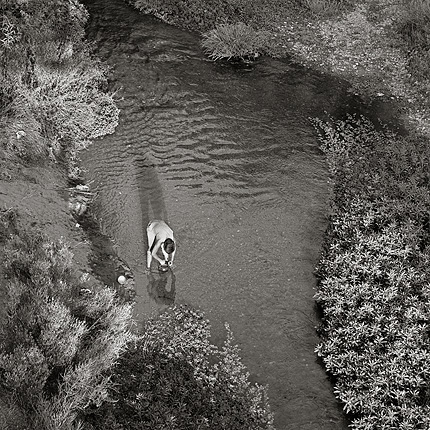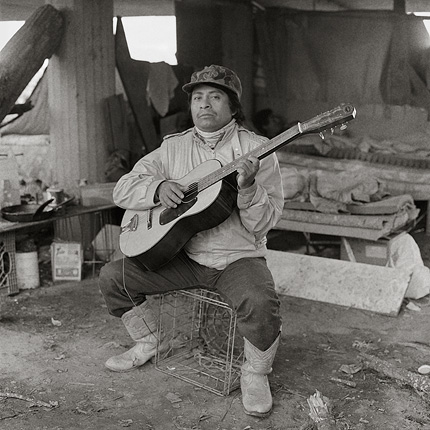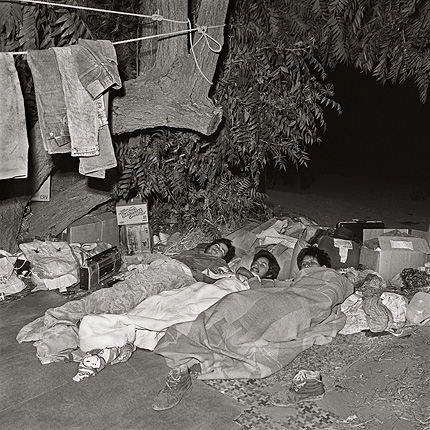In the Fall of 1988, I drove a Volkswagen bug from San Francisco to the Alexander Valley in Sonoma County, California. The Alexander Valley is one of the most important regions in California for producing premium wine. Under the Alexander Valley Road Bridge that ran partially across the Russian River, nearly 100 migrant farm workers from Mexico and Central America had set-up a camp to live in while they worked in the vineyards during the autumn harvesting season.
When I arrived at the camp, I was invited to stay with a family living in a carpet-lined wooden box under the bridge. As I was making a portrait of the family in their “home,” there was a poignant moment when a blanket fell and exposed a large television set in the back of the box. There was no electricity in the camp, yet the family had been packing this television set around from one camp to the next, and now it was here.
Over the next few months, I followed them and others into the vineyards and watched them work from sunrise until the late afternoon. Sundays were the only day off from working. Although the harvesting was done predominantly by the men, the entire family would work the vines, including the children. Early one morning, the vineyard foreman remarked on how hard-working the entire family was, including the children – “You’ve got to start them while they’re young to get the most out of them.”
Returning to the camp in the afternoon each day, we would share meals and enjoy each others’ company with talk and music. While the family slept in their box, I slept curled up in the backseat of the Volkswagen parked under the bridge.
“Paul Turounet photographed alongside undocumented workers harvesting grapes in Northern California’s wine-rich Alexander Valley. By being there he brings us along as well, to this privileged vantage point. From Turounet’s perspective, the workers seem proud and productive. There is no sense here of misused victims of a heartless agri-system. For too long we have seen these workers dehumanized in pictures, presented as objects of pity. But Turounet offers a different view. He uses the camera essentially as an equal sign; the subject on one side of the lens is equal to the photographer on the other side. As the audience viewing these images, then, we are identified in the same way. The workers look back at us, as curious as we are about them. These photographs, drawn from Turounet’s 1989 series Los Vendimiadores – The Grapepickers, reprise the subject of Horace Bristol’s images and provide a contemporary context for revisiting the themes of Steinbeck’s novel (The Grapes of Wrath).”
from exhibition catalog, Field Work – Documenting California’s Migrant Farm Labor Experience, 1935 to 2003, by Arthur Ollman, Director of the San Diego State University School of Art, Design and Art History and former Founding Director of the Museum of Photographic Arts, San Diego.

